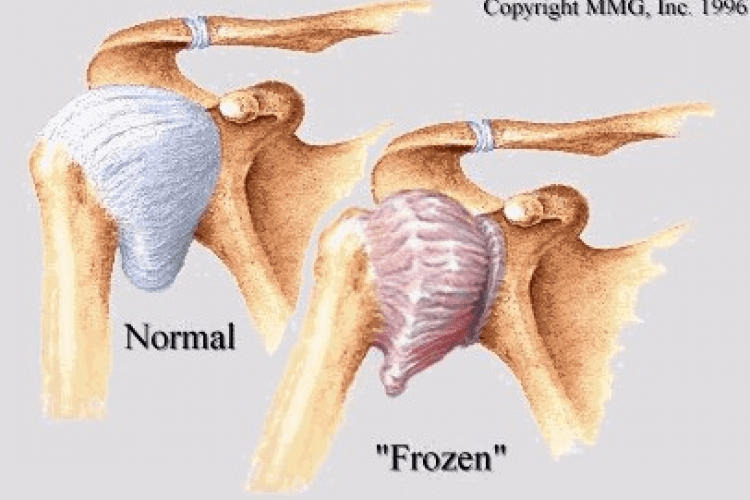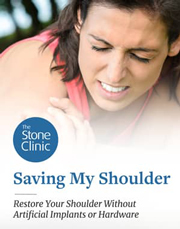Frozen Shoulder
“Stuck on the side of you….” While those are not quite the lyrics of the Stealers Wheel song, that is what people with frozen shoulders feel like.

They move their arm by elevating their shoulder blade but not by a free motion of the upper arm in the shoulder joint. Why does it happen, and what to do?
The shoulder is a ball-and-socket joint and the most mobile of all the joints in the body. It is surrounded by a capsule of tissue that contains synovial lubricating fluid. The muscles, tendons, cartilage, and soft tissue attachments must all remain healthy, soft, and flexible. This way the shoulder can move through its full range of motion, yet not fall out of the joint—a problem called subluxation or frank dislocation.
What Causes Frozen Shoulder?
Any injury or medical condition that causes inflammation can restrict the motion of the shoulder by tearing or stiffening the soft tissues, thickening the capsule, reducing the fluid, and tightening the joint. While there is an association between inflammatory arthritis, thyroid disease, and diabetes, even mild injuries such as a fall onto an outstretched hand can lead to a frozen shoulder presentation. It appears most commonly in middle-aged women and can be significantly disabling with the worst pain at night.
Diagnosing Frozen Shoulder: What You Need to Know
The diagnosis of frozen shoulder is usually made by a careful physical exam and augmented by X-rays and MRI. The MRI is useful because it can show the associated injuries such as a torn rotator cuff. Our treatments have evolved to be personalized for each patient. There appears to be a cycle for a frozen shoulder beginning with a rapid loss of motion, a prolonged state of stable discomfort and then resolution in many patients.
In the past, clear inflammatory presentations that we associated with rheumatoid or calcific arthritis were often treated with cortisone and anti-inflammatories and combined with physical therapy to help mobilize the joint. While the drugs improve the symptoms, it is not clear if they change the course of the disease. And, all anti-inflammatory drugs cause damage over time.
Treatment Options for Frozen Shoulder
Injury-related causes of frozen shoulder, such as torn rotator cuffs, are sometimes best treated with prompt surgical release and repair followed by extensive physical therapy. What we don’t know is where in the cycle of frozen shoulder intervention is most effective.
The newer therapies of growth factor injections combined with joint lubrication present an interesting intellectual dilemma. Growth factors recruit the body’s own stem-cell-derived self-repair cells. These cells are potent growth factors, anti-inflammatories, and lubricant production factories. The hyaluronate lubricants are the natural oil of the joint. We now have easy access to both growth factors and hyaluronate, which can be administered in the office without taking the patient’s own fat or bone marrow. But while this potent therapy is changing our treatment of many injured tissues, it is unclear in a frozen shoulder. Do we really want to stimulate more tissue “healing” even if this might make more scar tissue? Or will the strong anti-inflammatory properties of stem-cell-derived cells, combined with the lubrication ability of hyaluronate injections, naturally move the frozen shoulder process to a more rapid recovery?
One of the great wonders of medicine is that we can test these novel therapies with very little risk and potentially tremendous benefit. If our patients leave with a wave of their arm, we know we got the lyrics right.

